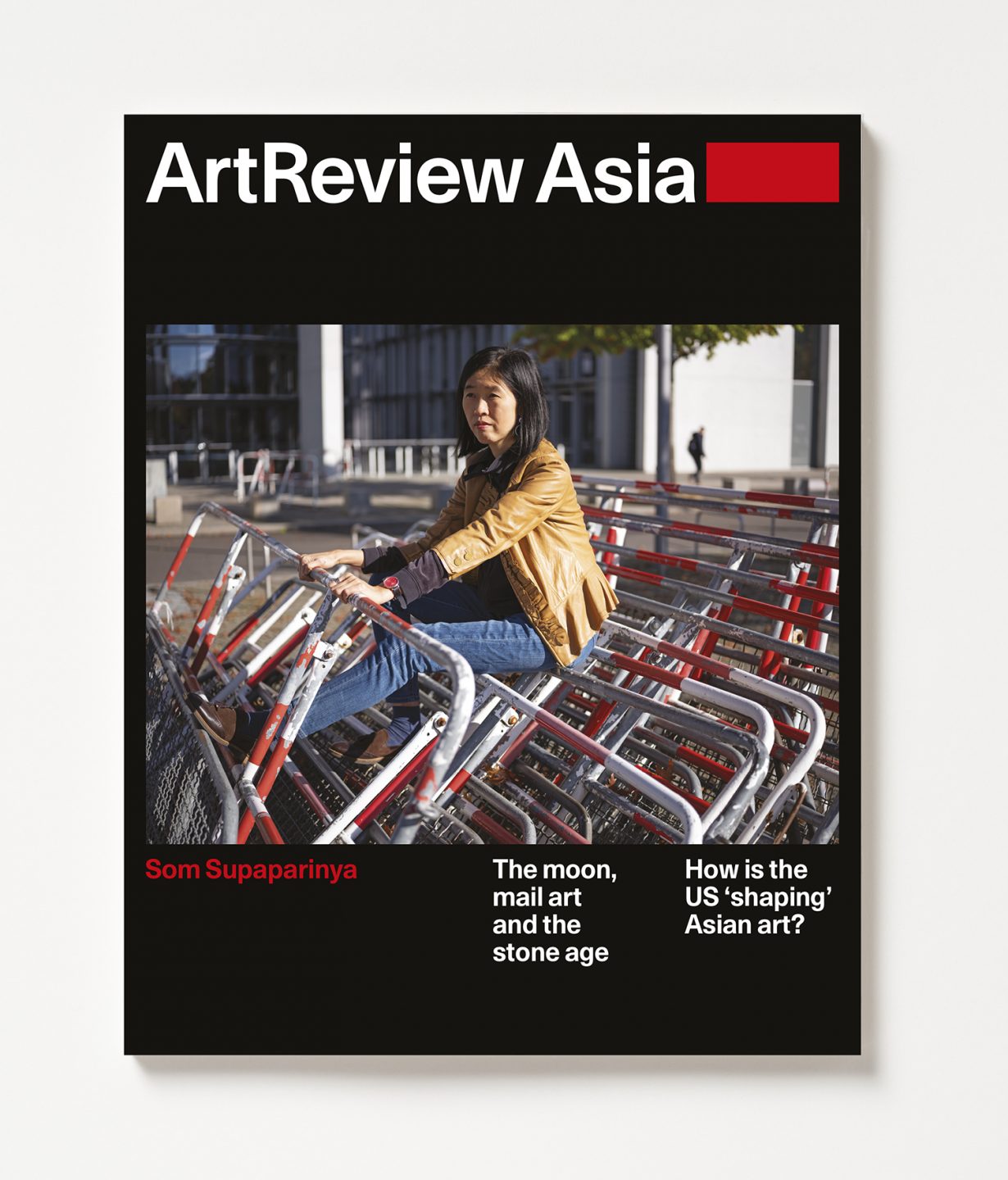Featuring Som Supaparinya, Lee Ufan and Claude Viallat, Horikawa Michio; columns on the National Museum of Asian Art’s 100-year anniversary and museum entrances; previews, reviews and more

In the Summer issue of ArtReview Asia, Som Supaparinya turns her lens to her homeland, documenting life impacted by environmental exploitation and geopolitics. Max Crosbie-Jones writes about Supaparinya’s filmwork, including Two Sides of the Moon (2021), that centres on life by the Pak Num Dam on the Mun River. In this two-channel installation, Supaparinya engages with local fisherfolk who mourn the ecological devastation and its impact on their livelihood. However, Crosbie-Jones writes, this ethnographic bent isn’t ‘extraordinary’ in this sense; rather the ‘potency… rests largely upon its placid yet critically engaged powers of visual description: a sensorial approach that renders conscious the Mun’s temporal rhythms and a mosaic of ontological entanglements, as well as its disequilibrium.’
On the occasion of the National Museum of Asian Art’s 100-year anniversary, Marv Recinto pauses amid the kimchi-making and Bollywood-dancing festivities to ask, whose idea of Asia is this? Recinto argues that the institution – comprised of the distinctly non-Asian sounding Freer Gallery of Art and Arthur M. Sackler Gallery – seems to think of the world’s largest continent as a projection of old Euro-American stereotypes, only involving Asian people for their performativity. ‘During this critical moment of American cultural history,’ she writes, ‘when identity politics and racial systems of power are being questioned, the National Museum of Asian Art is missing an important opportunity to think critically about itself and the Western-centric understanding of Asia it continues to perpetuate.’
Longtime friends, Lee Ufan and Claude Viallat speak to Mark Rappolt ahead of their first two-person show together at Pace Gallery London, Encounter. The leading postwar figures played pivotal roles in the Mono-ha and Supports/Surfaces movements in Asia and Europe respectively. However, in spite of their cultural specificity, the pair had developed parallel approaches to artmaking. Together, they discuss materiality, repetition and friendship.
Horikawa Michio spent decades shipping stones to people. Fellow artists, critics and even political figures like then-Japanese Prime Minister, Eisaku Satō, received these rocks as part of Michio’s lifelong project, Mail Art by Sending Stones. Tyler Coburn chronicles the Japanese artist’s geological practice, identifying the temporal specificity that makes the work so distinguishable.
Also in this issue
Cemile Sahin’s research-rich work interrogates the military–industrial complex, technology and exile; Sung Tieu’s new work exposes the operations of America’s fracking industry both in isolation and where they intersect with race and economics; Emily McDermott interviews WangShui about their recent shift from video and moving image installation and sculpture to painting; Daniel Elsea writes about the mistakes museums make when designing their entrances; and Skye Arundhati Thomas muses on what a new film set in London’s British Pakistani community might be saying about the stereotypical South Asian family unit.
Plus
Reviews of Shigeo Otake’s mushroom cacotopia; an exhibition inspired by dank memes; Rebecca Kuang’s new book Yellowface that asks, ‘Will white people ever stop whiting?’; and reviews of shows in Bangkok, Perth, Taipei, Mumbai and more.